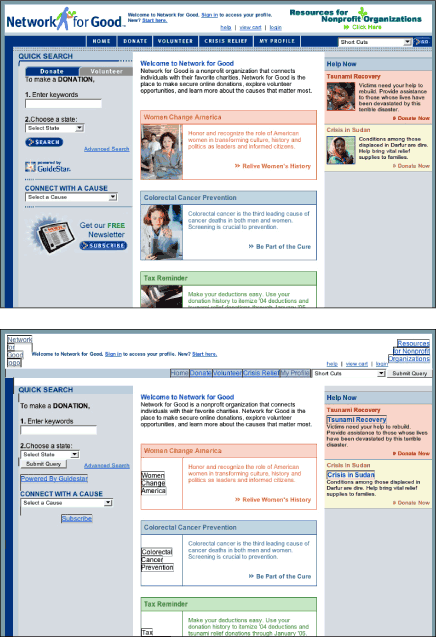Fundamentals
Build well
In many ways, good Web design is simply a matter of building well. The Web has built-in elements that, when used properly, allow for user modification and support different access methods. Universal usability requires that we utilize these methods to their best advantage.
One of the Web’s most basic methods for providing universal access is through alternates and fallbacks. When a user encounters content that is inaccessible in a given format, the equivalent information is provided through alternate methods. The ALT and LONGDESC attributes of the IMG tag are intended to provide nonvisual users an accessible text version of information contained in an image. The NOSCRIPT and NOFRAMES tags provide alternate access for users who cannot access JavaScript or frames. The OBJECT tag allows a layered approach to providing alternates. For example, a video might fall back on a slide show, then audio, then an image, and finally text. Effective use of fallbacks is an essential aspect of designing for universal usability (Figure 1.4).

Figure 1.4: The Network for Good site uses alt-text effectively; users who do not have access to images can still use the site. www.networkforgood.org
Flexibility and user modification are additional inherent Web properties that enable universal access. Web pages adapt to their environment, so the same page can be viewed on a computer display, printed page, or cell phone. This flexibility allows Web pages to be read by a wide range of devices, from computers to kitchen appliances. Flexibility, coupled with user control, allows users to transform pages to meet their access requirements. Users can choose to view pages with or without styles, with user-defined styles, with large or small text, with images or without. Even the needs of an individual vary depending on many factors. For example, users may need larger text when viewing pages projected in a lecture hall, or want to disable image loading when accessing the Internet from their home computer. Universal usability is possible on the Web when pages are designed for transformation and users are empowered to control their environment.

